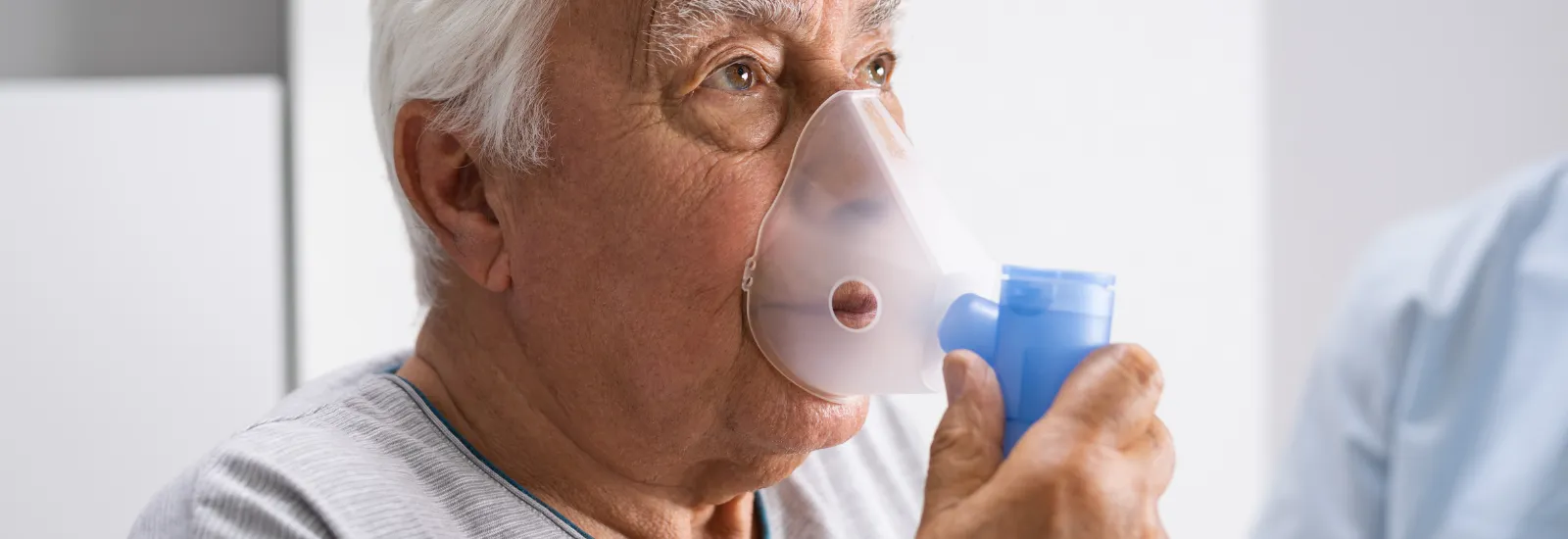
What you should know about the stages of COPD
Chronic obstructive pulmonary disease (COPD) is a group of
lung diseases that affects more than 15 million American adults, with many more
going undiagnosed, according to the U.S. Centers for Disease Control and
Prevention.
COPD is a lung condition that comes on gradually, and people
often don't realize they have it until symptoms become severe.
With COPD, less air flows in and out of the airways, making
it hard to breathe. This can result in less physical activity and diminished
quality of life. This lung condition is often accompanied by other health
problems, known as comorbidities. These conditions include high blood pressure,
diabetes, and heart disease.
What causes COPD?
Smoking is the No. 1 cause of COPD, so if you smoke or used
to smoke, you are at a higher risk of developing the disease. Quitting smoking
helps not only with reducing COPD risk, but it can also decrease your risk of
developing other smoking-related illnesses such as cancer and heart disease.
Stopping smoking can slow down the progression of COPD and
make your treatments more effective. Within just a few weeks of quitting, you
can notice improvements in your breathing, coughing, and clogged sinuses. If
you smoke and are having trouble stopping, you don't have to do it alone. There
are various resources that can help you successfully quit for
good.
Smoking is not the only factor that contributes to COPD.
Environmental toxins found in the workplace and even at home, such as ammonia,
asbestos, fumes, cleaning chemicals, and dust, can cause COPD. Genetics play a
part as well. If your family has a predisposition to or a history of COPD, you
may be more susceptible.
Emphysema and bronchitis
Lung diseases emphysema
and chronic bronchitis are the most common types of COPD.
Emphysema is a condition that causes shortness of breath. In
people who have it, the alveoli, which are the tiny air sacs at the end of the
smallest air passages in the lungs, have been damaged. Over time, the inner walls of the air sacs weaken
and rupture, creating larger air spaces instead of many small ones. This
reduces the surface area of the lungs and, in turn, the amount of oxygen that
reaches your bloodstream.
Most people with emphysema have chronic bronchitis, in which
the bronchial tubes, which carry air to and from the alveoli, become inflamed,
causing a persistent cough and mucus development, making it difficult to
breath.
Symptoms of COPD
COPD symptoms often don't appear until significant lung
damage has occurred. These symptoms include:
- Being short of breath
- Chest tightness
- Chronic cough that might produce clear, white, yellow, or green mucus
- Excess phlegm or sputum
- Recurring respiratory infections
- Frequent wheezing
- Lack of energy
- Trouble taking a deep breath
- Swelling in ankles, feet, or legs
People
with COPD also
experience episodes called exacerbations, or flare-ups. During this time, their
symptoms worsen and can last for several days or more.
The four stages of COPD
The severity of COPD is diagnosed using a simple breathing
test called spirometry that measures lung function. A patient blows into a
mouthpiece that is connected to a machine called a spirometer. This testing
captures two measurements:
- Forced vital capacity (FVC): The amount of air you can completely exhale in one breath
- Forced expiratory volume (FEV1): The amount of air you can exhale from your lungs in one second
Those two numbers are then compared to the values of a
healthy person your age, height, and race. These figures are also used to
measure your COPD status through a process known as the GOLD staging system.
Developed by the Global Initiative for Chronic Obstructive Lung Disease (GOLD),
this testing method helps determine the stages and severity of your condition
to guide your treatment options.
The GOLD stages are:
- Stage 1: FEV1 80% volume or more of normal (mild)
- Stage 2: FEV1 between 50% and 80% volume of normal (moderate)
- Stage 3: FEV1 between 30% and 50% volume (severe)
- Stage 4: FEV1 lower
than 30% volume (final stage)
Treating COPD
Though COPD is a progressive disease, it is treatable. With
proper treatment and life care from a pulmonologist,
many people with COPD can effectively manage their symptoms, improve their
quality of life, and reduce the risk of associated conditions.
If you
have COPD, the most important thing you can do is follow your provider's
instructions. When you follow your treatment plan as prescribed, you can expect
to:
- Breath better
- Cough less
- Increase strength and mobility
- Improve your mood
- Avoiding smoky areas and places with fumes
- Being physically active
- Breathing exercises to strengthen the muscles needed to breathe
- Cooking meals near open doors or windows
- Eating a nutritious diet
- Keeping the air at home clean
- Maintaining a healthy weight
According to the COPD Foundation, there is no set life
expectancy for people with the disease. In fact, even those with severe COPD
can live a long life when they follow their treatment plan.
Long-term
oxygen therapy may be used for COPD if you have hypoxia or Stage 3 or 4 COPD.
Use of oxygen can slow or prevent heart failure and can increase your life
expectancy.
COPD
is not curable, but proper treatment can help manage symptoms and prolong
quality of life. Request an appointment with one of the
board-certified pulmonologists at Reid Health and start getting relief.

